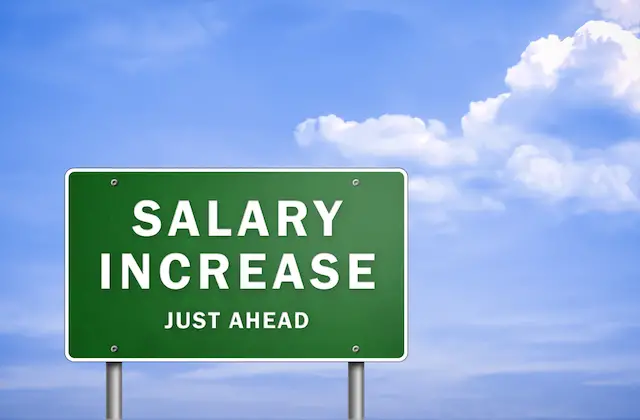How much of a pay raise will federal employees receive in 2017? As expected, President Obama has just issued an “alternative pay plan” that resolves the matter by issuing an alternative pay plan to Congress. The alternative pay plan is published in its entirety below.
The average pay increase for federal General Schedule employees for 2017 will be 1.6%. That is not a surprise, but the submission of an alternative pay plan is confirmation of that amount for the 2017 pay raise. (See 2017 Federal Pay Raise and COLA Update)
According to President Obama:
Since the pay freeze ended, annual adjustments for civilian Federal employees have also been lower than private sector pay increases and statutory formulas for adjustments to the General Schedule for 2014 through 2016. However, we must maintain efforts to keep our Nation on a sustainable fiscal course. This is an effort that continues to require tough choices under current economic conditions.
The reason he is stating this is because of another comment in the alternative pay plan:
Under current law, locality pay increases averaging 28.49 percent and costing $26 billion would go into effect in January 2017. Federal agency budgets cannot sustain such increases.
So, it is not a surprise that federal employees will not be receiving an average raise of 28.49% for 2017. No one, even federal employee unions, were expecting or advocating such a large raise. Here is how the average 1.6% pay raise will play out in practice:
In my August 31, 2016, alternative pay plan submission, I noted that the alternative plan for locality payments will be limited so that the total combined cost of the 1.0 percent across-the-board base pay increase and the varying locality pay increases will be 1.6 percent of basic payroll, consistent with the assumption in my 2017 Budget.
In effect, there will be a pay raise of 1 percent across-the-board for all General Schedule employees. In addition, locality pay increases that will be applicable to most federal employees. The actual amount will vary according to the geographic location of an employee. The result will be an average increase of 1.6%—with employees in some areas getting more than that and employees in other areas getting less.
The pay raise will not be final until an Executive Order is issued. That will probably happen in the near future. Last year, the Executive Order on the pay raise was issued on December 18, 2015. It is unlikely that anything will now occur to derail the amount of the pay raise.
The locality pay rate information is not yet known but the amounts will vary by locality. For example, in 2016, the locality pay rate for the Washington, DC metro area is 24.78%. In 2017, it will be 26.04%. That is an increase of 1.26%. In San Francisco, the new locality pay rate will be 37.07%. That does not mean that employees there will be getting a raise of that magnitude. Rather, for 2016, the locality pay rate in the San Francisco area is 35.75%. That means the locality pay raise for that metropolitan area will be about 1.32%.
We do not yet have the actual pay rates for each grade, step and locality.
Here is the President’s submission of an alternative pay plan for 2017.
Message — 2017 Alternative Plan for Locality Pay
TO THE CONGRESS OF THE UNITED STATES:
I am transmitting an alternative plan for pay increases for civilian Federal employees covered by the General Schedule and certain other pay systems in January 2017. Title 5, United States Code, authorizes me to implement alternative pay plans for pay increases for civilian Federal employees covered by the General Schedule and certain other pay systems if, because of “national emergency or serious economic conditions affecting the general welfare,” I view the adjustments that would otherwise take effect as inappropriate.
Civilian Federal employees made significant sacrifices as a result of the 3-year pay freeze that ended in January 2014. Since the pay freeze ended, annual adjustments for civilian Federal employees have also been lower than private sector pay increases and statutory formulas for adjustments to the General Schedule for 2014 through 2016. However, we must maintain efforts to keep our Nation on a sustainable fiscal course. This is an effort that continues to require tough choices under current economic conditions.
Under current law, locality pay increases averaging 28.49 percent and costing $26 billion would go into effect in January 2017. Federal agency budgets cannot sustain such increases. In my August 31, 2016, alternative pay plan submission, I noted that the alternative plan for locality payments will be limited so that the total combined cost of the 1.0 percent across-the-board base pay increase and the varying locality pay increases will be 1.6 percent of basic payroll, consistent with the assumption in my 2017 Budget. Accordingly, I have determined that under the authority of section 5304a of title 5, United States Code, locality-based comparability payments for the locality pay areas established by the President’s Pay Agent, in the amounts set forth in the attached table, shall become effective on the first day of the first applicable pay period beginning on or after January 1, 2017.
The locality-based comparability payments for the locality pay rates in the attached table are based on an allocation of 0.6 percent of payroll as indicated in my August 31, 2016, alternative pay plan for adjustments to the base General Schedule. These decisions will not materially affect our ability to attract and retain a well-qualified Federal workforce.
BARACK OBAMATHE WHITE HOUSE,
November 29, 2016.



